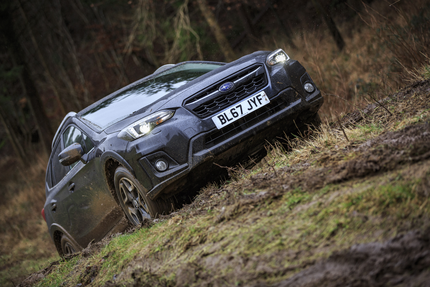
Your support helps us to tell the story
From reproductive rights to climate change to Big Tech, The Independent is on the ground when the story is developing. Whether it's investigating the financials of Elon Musk's pro-Trump PAC or producing our latest documentary, 'The A Word', which shines a light on the American women fighting for reproductive rights, we know how important it is to parse out the facts from the messaging.
At such a critical moment in US history, we need reporters on the ground. Your donation allows us to keep sending journalists to speak to both sides of the story.
The Independent is trusted by Americans across the entire political spectrum. And unlike many other quality news outlets, we choose not to lock Americans out of our reporting and analysis with paywalls. We believe quality journalism should be available to everyone, paid for by those who can afford it.
Your support makes all the difference.Predictive text is an odd thing. When I typed into my iPhone the X that comes before the V and after the Subaru bit in the name of this car, it rendered it as “Subaru XC40”. No such thing of course, but it thought I meant the Volvo XC40, which is the sexier, classier, more aspirational motor car that the Subaru XV would surely wish to be.
Maybe my iPhone was a snob, or maybe it was because I’ve also been writing about the new XC40, but I found it a bit unsettling. Unfair too. In an ever more crowded market driven by customer frenzy for a premium-badged compact SUV or crossover vehicle, the Subaru does struggle to get noticed.
The Volvo has a more obvious appeal to the British middle classes. It has funkadelic bright Ikea-style interior fabrics, a nice big iPad-style touchscreen and a generally cool vibe.
The Subaru doesn’t. In fact it doesn’t even have the trademark frameless windows that used to be so associated with the brand, especially by the small band of dedicated Subaru fans who’ve sustained it at some pretty low volumes (the lairy WRX sports saloon model is no longer sold in the UK, by the way).
Against the Volvo, the Subaru’s touchscreen is smaller and has fewer functions, though it works very intuitively and responsively (so you can find Absolute 70s on the radio or get the sat nav to take you to the nearest petrol station without resorting to the handbook to, ahem, give a couple of random examples).
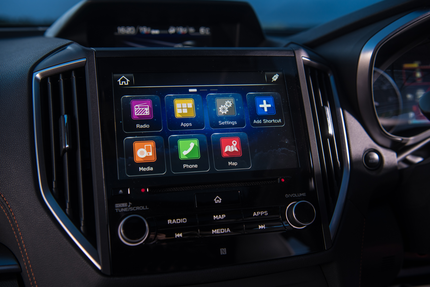
Where the Volvo’s cabin materials are soft and warm to the touch, the Subaru’s are colder and harder – which at least helps to keep this more serious off-roader clean. There’s nothing at all wrong with the Subaru’s styling, you understand, and those rubber wheel arch protectors do look practical, but then there’s nothing too adventurous about it either. It is all new but looks a good deal like the previous 2012 model, which you could be forgiven for not noticing on the road.
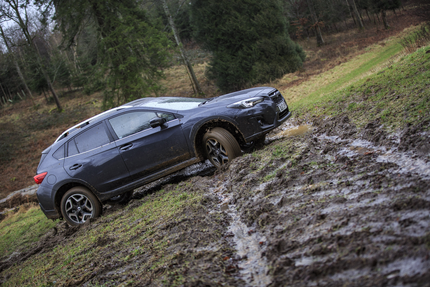
There are small things at this level that the Subaru does very well, such as the reversing camera that yields an unusually sharp image. The XV is also just the right width to make town driving feasible, which is more than you can say about most of this new breed of urban tractors.
What the Subaru has got that the majority of its competitors lack is some decent engineering. The shame of it is, you see, that the really special bits of this car are invisible and, thus, aren’t available to boost “showroom appeal”.
The spec
Price: £28,495 (as tested; range starts at £25,000)
Engine capacity: 2-litre petrol; CVT auto
Power output (PS @ rpm): 156@3,600
Top speed (mph): 120
0-62 mph (seconds): 10.4
Fuel economy (mpg): 40.9
CO2 emissions (g/km): 155
The chassis, for example, has been re-engineered and is much stronger than its processor model – excellent for on-road handling as well as off-road agility. The XV has a proper (petrol) “boxer” engine too, just like a Subaru ought to.
This unusual design is where the engine pistons are opposed horizontally rather than in line vertically, offering amore compact shape and a distinctive thrummy tone (like a classic VW Beetle, which had the same layout).
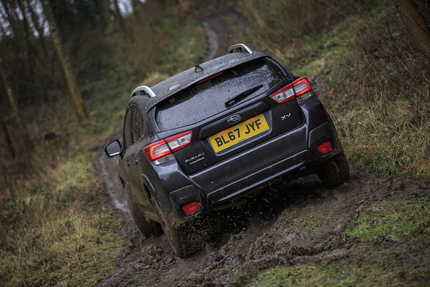
The engine, superb as it is, does have a slightly strained relationship with the continuously variable automatic gearbox, dubbed “Lineartronic” by Subaru. It’s like a couple where one party wants to rev up and get going for a night out, and is quite noisy about it (engine), while the other would much rather a quiet night in (transmission). The XV might be better suited to a conventional diesel unit anyway, for lowdown torque, but Subaru doesn’t really do those as they’re very much a Japanese make and over there diesel is nowhere near as popular as it is in Europe (recent scandals notwithstanding).
You get a choice of a 1.6 or two-litre petrol engine, with that auto box, and that’s it. You won’t get great fuel economy out of your XV, compared to say a diesel XC40 or most of the other contenders.
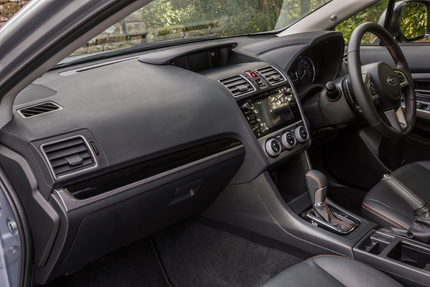
What you do get from the Subaru, once again, is a full off-road commitment and full-time four wheel drive. Like Suzuki, Mitsubishi, Land Rover and Jeep, the Subaru has a long tradition in the all-wheel drive business, and the basic system plus assistance from a ‘hill descent control’ means it can cope with almost every terrain the British countryside can confront it with. The XV is an ideal little SUV, in other words, that is unlikely to leave you stranded, even with the Beast from the East doing its worst. Unpaved roads, muddy fields, ski slopes – all should be passable with a Subaru.
I am not confident you could say the same of, for example, the Volvo XC40, Honda HR-V, Mazda CX-3 and Toyota CH-R. Given that, and if you really do live in the back of beyond, an XV is pretty good value and has few peers.
The Subaru should have impressive reliability, too, if history is anything to go on, though of course many other manufacturers have narrowed the gap on the Japanese makes on that criteria. Oversupplied with new product as the ever-expanding small SUV sector is, there remains a niche for a compact crossover that actually lives up to the promise of its rugged, chunky looks. A rare beast but a faithful one, though remember that its beauty lies underneath that unprepossessing exterior.
Join our commenting forum
Join thought-provoking conversations, follow other Independent readers and see their replies
Comments